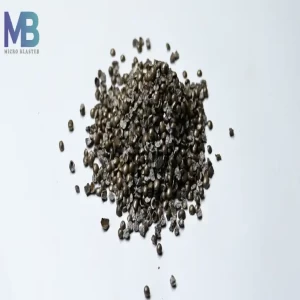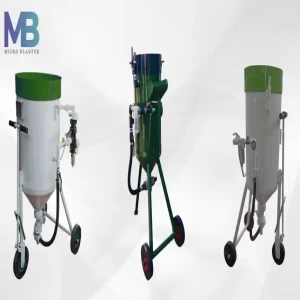Search

Shot peening process

Controlled shot-peening is a process which is used largely in a manufacture of mechanical parts. It should not be confused with sand blasting machine used in cleaning or descaling parts. Shot-peening is in fact a true machining operation which helps increase fatigue and stress corrosion resistance by creating beneficial residual surface stresses. A technique consists of propelling at high speed small beads of steel shot, cast iron. Glass bead or cut wire against the part to be treated. The size of the beads can vary from 0.1 to 1.3 or even 2mm. A shot is blasted under conditions which must be totally controlled. A main advantage of this particular surface treatment is that it increases considerably a fatigue life of mechanical parts subjected to dynamic stresses.
It has many uses in industry, particularly in the manufacture of parts as different as helical springs, rockers, welded joints, aircraft parts, transmission shafts, torsion bars, etc. At an time when a optimum characteristics is being demanded of mechanical assemblies, shot-peening is the surface treatment method which is being increasingly chosen by engineers. However, shot-peening technology is yet to be fully perfected and a substantial changes produced in a treated material make it difficult at a present time to put a best conditions into practical use.
Introduction of shot peening:
This shot peening is the method of cold working in which compressive stresses is induced in a exposed surface layers of metallic parts by a impingement of the stream of shot, directed at a metal surface at high velocity under controlled conditions. It differs from blast cleaning in primary purpose and in the extent to which it is controlled to yield accurate and reproducible results. Although shot peening cleans a surface being peened, this function is incidental. The major purpose of shot peening is to increase fatigue strength. A process has other useful applications, such as relieving tensile stresses that contribute to stress-corrosion cracking, forming and straightening of metal parts, and testing a adhesion of silver plateon steel.
What is shot peening?
Shot peening is the cold working process in which a surface of a part is bombarded with small spherical media called shot grit. Each piece of shot striking a metal acts as the tiny peening hammer, imparting the small indentation or dimple on a surface. In order for a dimple to be created, a surface layer of the metal must yield in tension. Below a surface, the compressed grains try to restore the surface to it original shape, producing the hemisphere of cold-worked metal highly stressed in compression. Overlapping Dimples develop the uniform layer of residual compressive stress.
Why shot peen?
A atoms in a surface of a piece of manufactured metal will be under (mostly) tensile stresses left over from grinding, welds, heat treatments and other stressful production operation. Cracks promulgate easily in areas of tensile stress because a tensile stresses is already working to pull a atoms of the metal apart. By shot peening a material you introduce a layer of compressive stress by compacting a material. As a shot peening are performed, a atoms on a surface of a metal become crowded and try to restore a metal's original shape by pushing outward. A atoms deeper into a metal is pulled toward a surface by their bonds with a atoms in a compressive layer. These deeper atoms resist the outward pull creating internal tensile stress that keep the part in equilibrium with the compressive stress on a surface.

